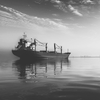New SNAME PNA Book, Intact Stability Focus
The Principles of Naval Architecture Series: Intact Stability is now available from the Society of Naval Architects and Marine Engineers (SNAME). The new volume, a revision of the previous chapter two of PNA, develops the principles of intact stability in calm water, starting from initial stability at small angles of heel then proceeding to large angles.
Written by Dr. Colin S. Moore, Manager, Advanced Analysis and Salvage Engineering at Herbert Engineering Corp. and a member of SNAME ad hoc committees on Double Hull Intact Stability and Parametric Rolling, the new volume in the PNA series discusses various effects on stability, such as changes in hull geometry, changes in weight distribution, suspended weights, partial support due to grounding or drydocking and free liquid surfaces in tanks or other internal spaces.
The concept of dynamic stability is introduced, starting from the ship’s response to an impulsive heeling moment. The effects of waves on resistance to capsize are discussed noting that, in some cases, the wave effect may result in diminished stability and dangerous dynamic effects.
Problems encountered in ships of special type and size that have been developed in recent years, many of which - by reason of size, configuration or lack of a history of design experience - require a design approach based on first principles, receive special attention. Modern developments in classification society strength standards and modern rule developments are covered, including Common Structural Rules for tankers and bulk carriers.
There are sections on the special stability problems of craft that differ in geometry or function from traditional seagoing ships including multihulls, submarines and oil drilling and production platforms. The final section treats the stability of high performance craft such as SWATH, planing boats, hydrofoils and others where dynamic as well as static effects associated with the vessel’s speed and manner of operation must be considered in order to insure adequate stability.
(www.sname.org)










